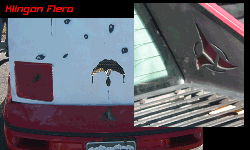There are a few considerations for this....
The welding wire is the best stuff... this is made specifically for low voltage and high current over long distances. It has much finer strands than normal battery wire.
Running bigger wire than you think you need isn't a bad thing. Remember that as distance goes up, wire size must also go up to compensate for the resistance in the wire. If you don't do this, the car will likely have problem starting. Fractions of an ohm are important when you are pulling 200-400 amps.
OE cables can get away with "thin" wire because they are fairly short. Most are less than 1/2 to 1 meter long. When a cable is 2-3 meters long, it has to be much thicker to carry the same current. OE cables, especially ACDelco/Delphi ones, also use manufacturing processes that insure better connections at the wire ends. Delphi crimped terminals are applied with a hydraulic press.
One reason to run two wires is if you are in a high rust or a cold climate.
Two wires will get all the current to/from the battery and starter. The starter is the single biggest power eater in the whole car. And... There are fewer connections to get corroded. Just one crappy connection can and probably will kill the whole car.
If you want to use just the big + wire... mount the ground to the car frame directly. Not the front suspension. (same issue... minimizing corrosion and voltage drops. Even small drops add up. The front cross member is not welded in.)
With a frame ground, you have to add a good heavy cable between the block and frame. (Not the cradel!) The OE ground straps aren't ment to handle the ground return for the high amps of the starter.
Also... There is some new technology in the works... Go to www.motor.com and read Eye on Electronics by Mike Dale in the Sept 2000 issue. It talks about how car makers are looking to cut the size of the battery by using capacitors. (These are advanced versions of the large caps used with big automotive sound systems) These capacitors are already on the market but I don't know where you can get them or what they would cost. One source seen in Motor can be found here. (I don't know if they sell to the public.)
A car with the capacitors only needs a "motor cycle" type battery. The cap/battery package ends up weighing about 10 pounds vs a common 30-50 pound battery in most cars and light trucks today.
Another big advantage is that capacitors are a one time purchase as long as you chose them carefully. These don't go bad every 2-4 years like a battery. A side effect is the caps can actually extend the life of the battery itself since they take current spikes far better than a normal battery only system. So even tho you still use battery, it lasts longer.
If you have multiple caps they don't even have to be mounted in the same spot... Since they don't outgas, you can even mount them in the trunk and other enclosed areas you could never put a battery in.
------------------
Be alert. The world needs more lerts...
The Ogre's Fiero Cave (It's also at the top of every forum page...)
[This message has been edited by theogre (edited 11-08-2003).]




















